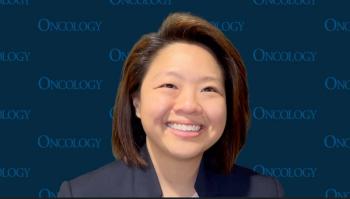
Nilotinib, Dasatinib Offer Similar Outcomes in CML Patients
A propensity score–matched comparison of two phase II trials found that dasatinib and nilotinib offer similar responses and outcomes as first-line therapy for patients with chronic-phase CML.
A propensity score–matched comparison of two phase II trials found that the tyrosine kinase inhibitors (TKIs) dasatinib and nilotinib offer similar responses and outcomes as first-line therapy for patients with chronic-phase chronic myeloid leukemia (CML). Though no direct comparison has been done, both agents can be considered reasonable first options in this malignancy.
“Currently, there are 3 approved TKIs as a frontline therapy for CML,” wrote study authors led by Jorge E. Cortes, MD, of the University of Texas MD Anderson Cancer Center in Houston. Previous work showed that both dasatinib and nilotinib have improved potency and responses compared with the first-generation TKI imatinib, but no head-to-head comparison has been conducted.
The new trial used propensity matching from phase II cohorts of each of the newer agents, allowing for comparison in a clinically well-matched cohort. The study included 102 dasatinib and 104 nilotinib patients with newly diagnosed CML, and 87 of each of those were analyzed after propensity matching was complete. The results were
There were no significant differences at baseline with regard to any patient characteristics. The median follow-up period was 50.9 months in the dasatinib patients and 43.0 months in the nilotinib patients (P = .56).
Treatment responses were similar between the groups. The 3-month BCR-ABL1/ABL1 ratio < 10% rate was 93% with dasatinib and 94% with nilotinib (P = .25). The rates of major molecular response at 12 months were 77% and 85%, respectively (P = .13). The molecular response with 4.5-log reduction in the ratio at 36 months was 66% in the dasatinib group and 64% in the nilotinib group (P = .96).
Survival outcomes were also similar. The overall survival rate at 3 years was 99% with dasatinib and 93% with nilotinib (P = .95); this represented only three deaths in total, one from a second malignancy, one from pneumonia, and one from an unknown cause. Event-free survival, failure-free survival, and transformation-free survival rates were also similar at 3 years between the groups.
There were also no differences with regard to treatment discontinuation, or reasons for doing so. There were, however, significant differences with regard to the toxicity profile of each drug. Dasatinib was associated with more cytopenia, respiratory symptoms, gastrointestinal symptoms, neurologic symptoms, and pleural effusions, while nilotinib had greater incidence of elevated liver enzymes and bilirubin levels. Two nilotinib patients experienced cardiovascular events (one myocardial infarction and one peripheral vascular disease).
“Our current results suggest that both dasatinib and nilotinib are reasonable standard-of-care options for patients who are newly diagnosed with CML, and the choice of drug can be made based on other factors, such as toxicity profiles, comorbidities, physicians’ experience, and treatment schedule,” the authors concluded.
Newsletter
Stay up to date on recent advances in the multidisciplinary approach to cancer.


















































































